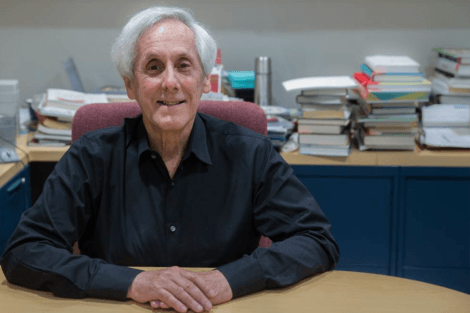October 1, 2021 – Jay Winsten served as associate dean and founding director of Harvard T.H. Chan School of Public Health’s Center for Health Communication from 1985–2020. He currently directs the School’s Initiative on Media Strategies for Public Health.
Q: Recommendations on COVID-19 boosters have changed swiftly in recent days, reportedly causing confusion among health workers and the public. Can you comment on how these recommendations were presented and what was problematic about the way it was done?
A: The recent confusion around boosters stemmed largely from federal regulatory structures and processes that are not optimally suited to managing our responses to a rapidly evolving virus. Scientific review committees of the Food and Drug Administration (FDA) and the Centers for Disease Control and Prevention (CDC) reached different conclusions, based on the very same science, about making booster shots available to frontline health workers, teachers, and others who are at heightened risk of exposure to the virus because of their occupations.
The FDA committee recommended that those groups receive boosters, but the CDC committee didn’t. CDC Director Rochelle Walensky responded rapidly to bring CDC’s guidance into sync with FDA’s, but the committees’ contradictory findings, and the ensuing headlines, confused the public (i.e., “which committee should we trust?”) and certainly didn’t help with the vaccine hesitancy problem.
Under the extraordinary circumstances of COVID-19, the two agencies should explore ways to better coordinate their activities to the extent permitted by law. Separately, there is an immediate need to better explain to vaccine-hesitant individuals why recommending boosters does not mean vaccines aren’t working properly.
Q: With the science surrounding COVID-19 changing rapidly, isn’t clear communication bound to be a problem?
A: Yes, but it’s a problem that can be managed far more effectively than it has been.
Q: You were quoted in the Washington Post as saying that communication experts should be more involved in discussions surrounding major public health recommendations regarding COVID-19. In what ways could they contribute?
A: Setting policy is only the first step. Selling the policy, especially to a diverse, highly- polarized society, is the hard part. When the public health stakes are as high as they are right now, a war-room mentality is required, as in a political campaign, with seats reserved at the table for seasoned communication strategists. There exists a rich body of research in health communication that offers deep insights into reaching and influencing diverse segments of society. Those insights typically have been absent from key levels of decision-making.
Q: If you could give one piece of advice to public health officials involved in presenting information to the public about COVID-19, what would it be?
A: My “one” piece of advice would have three parts:
Don’t proclaim new guidance—explain it. Share the rationale underlying the guidance, minimizing jargon. In television interviews, make the assumption that your audience is high school-educated and vaccine-hesitant. Remember to speak primarily to that audience, not to the journalist conducting the interview. Consider using graphics –simple graphics—if appropriate to the setting. Be candid about the degree of uncertainty in the underlying science and explain the reasons for it. Identify the metrics you’ll be tracking to inform future changes to the guidance. Maintain transparency about your decision-making process. Prepare the public for anticipated changes and unexpected new developments as the science progresses, including the fact that viruses change and may require new responses. Don’t settle for escape clauses like “based on what we know right now” when major changes are already in the offing. Avoid sudden surprises.
Seek feedback. Create an online panel of lay people from diverse backgrounds to provide rapid feedback on the clarity of new guidance prior to its release. Use social media tracking to monitor how the message was received by diverse segments of the public.
Take media training. If you are a brilliant scientist, clinician, or public health expert, don’t assume you’re also a brilliant communicator. You’re probably not. It requires a different set of skills that can be readily mastered through training, practice, and feedback. Learn how to craft soundbites in real time that are concise, clear, and engender trust. Becoming a great communicator is an essential part of your job. Find the time.
photo: Sarah Sholes
